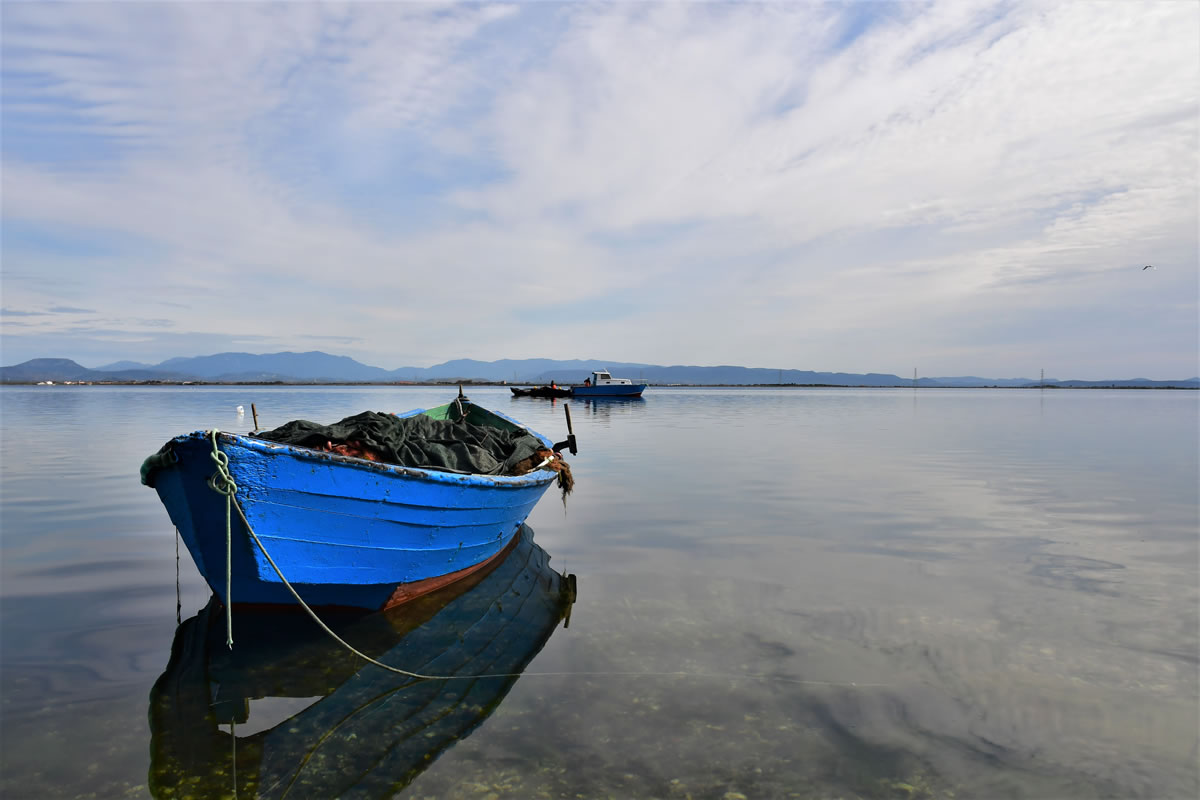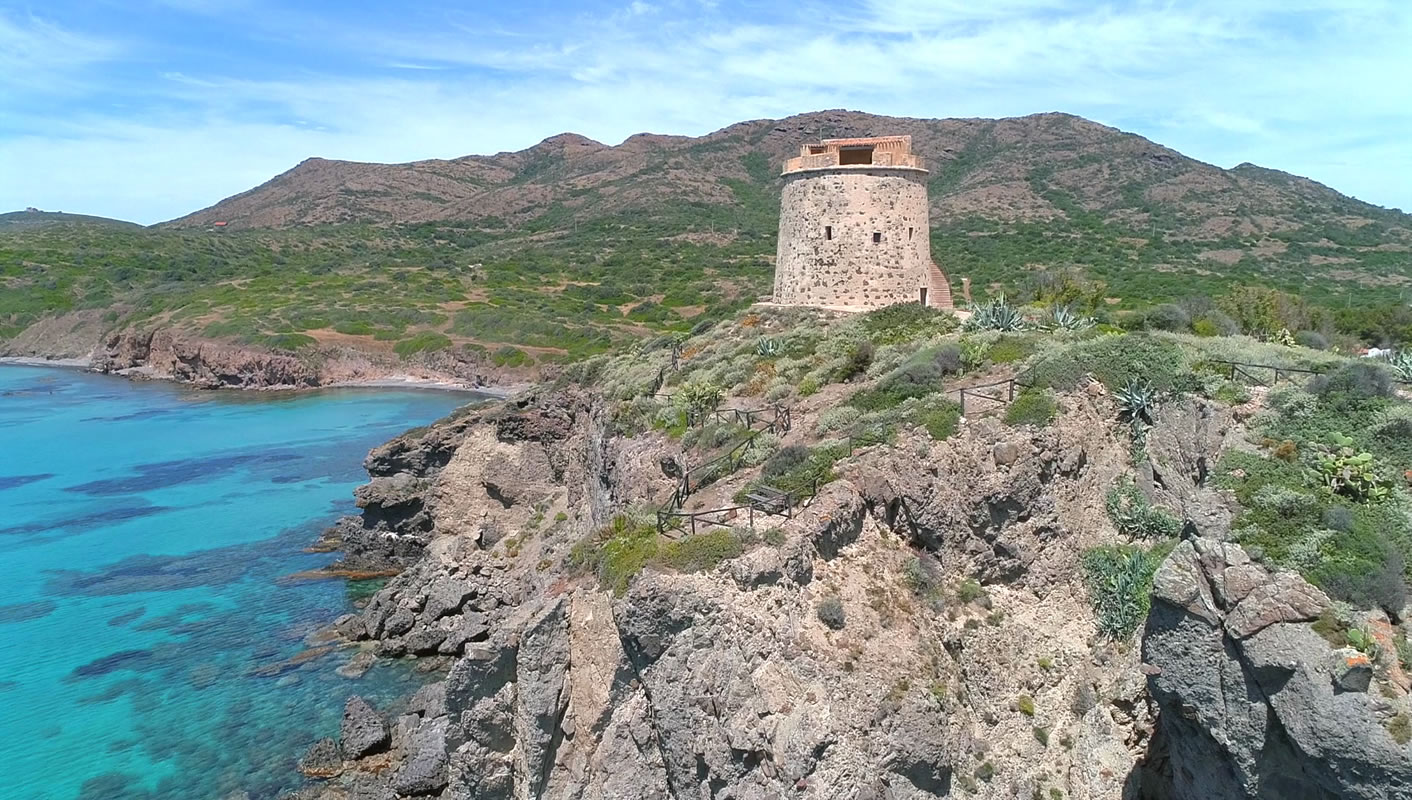This is not your usual guide to the Island of Sant’Antioco; it’s a small tour to discover how to spend three days filled with sports and exploration on a wonderful island. We want to suggest unconventional routes and adrenaline-filled activities for those who love sports and fully active holidays. A holiday at our hostel could complete the picture of a perfect holiday, so keep reading our suggestions.
A 3-Day Tour to Discover Sant’Antioco
What should you bring with you? Staying at our hostel allows you to return in the evening and rest, ready to set off again the next morning with all the necessary energy. Therefore, we recommend going on excursions with minimal equipment to avoid being weighed down. The essentials are: suitable shoes, a light backpack, and water.
Sant’Antioco is characterised by quiet inland areas that are easy to walk through and coastal areas that are quite rugged and distinctive due to their particular formation. The trails on the western coast are ideal for challenging treks. In our tour, we aim to satisfy even the most courageous and fit travellers.
First Day – Sant’Antioco
Dedicate the first day to the town of Sant’Antioco and the lagoon.
Sant’Antioco is connected to the mainland by a bridge and artificial isthmus and stands on the ruins of Sulki, one of the oldest Phoenician cities in the Western Mediterranean. Over the centuries, it developed maritime ambitions and the need to exploit the sea, eventually becoming an important commercial hub. This led to the emergence of a highly specialised profession: the Master Shipwright. The Museum of the Sea and Master Shipwrights is a journey that will allow you to learn about the lagoon, the sea, and these professionals in the old shipyards that, for centuries, built and repaired the island’s boats.
Famous for its historic centre and seafront where freshly caught fish is sold, this town offers many opportunities to learn about the history and traditions of this place: the Ethnographic Museum, for example, is dedicated to the tools and work carried out on this small island. The Archaeological Museum, on the other hand, tells the millennial history of the ancient city of Sulki. Finally, don’t miss the Museum and Workshops of Byssus, a fascinating journey that retraces an ancient and almost entirely vanished art: byssus weaving. Byssus filaments are extracted from the largest mollusc in the Mediterranean, “Pinna Nobilis“, through a long and laborious process, but once processed, they give rise to the precious sea silk that was used in the past to create fine fabrics.
After this first day, you can rest at our hostel and gather energy for the second day, which is wilder and focused on discovering the beaches.
Second Day – Calasetta and North-Western Coast
On the second day, we recommend heading north towards Calasetta. The inland route is not particularly interesting from a landscape perspective (about 10 km). However, along the way, you can refresh yourself by swimming at one of the many beaches with shallow waters and white sand: from Calasetta heading southwest, you’ll find Sotto Torre Beach, Saline, and Spiaggia Grande.
Upon reaching Calasetta, take a short walk to explore the village and continue heading south. We suggest stopping for a brief break at the Mangiabarche Rock. Ideal for diving and fishing, it is a characteristic place because a small solitary lighthouse resides on the rock. A place with a sinister charm, it is also beautiful to admire at sunset.
The western coast is characterised by a landscape rich in Mediterranean scrub and agricultural fields. Here the landscape changes, and towering cliffs dominate the sea. The route winds between a small fjord sheltered from the winds (Cala Lunga) and Cala Sapone: an enchanting inlet enclosed by two headlands with a group of rocks in the centre. The cliffs towering over the sea and the rocks are the main attraction of this cove. Its formation lends itself to a trek with breathtaking views or a canoe excursion.
Third Day – South Coast of the Island
For the final leg of the tour, you have two options: you can take the long route and reach the farthest point of the island through a fairly challenging path. Specifically at Capo Sperone, where the ruins of an old lighthouse overlook the gulf. A little further on is Turri: a location from which you can enjoy a magnificent view of Sulcis Iglesiente.
Alternatively, travel through the inland area of Cannai to reach the most well-known beaches equipped with services. Coa Cuaddus is of volcanic origin and is the largest in the municipality of Sant’Antioco.
Continuing northeast is the island’s most famous beach: Maladroxia. It is a small tourist village that has developed around the only equipped beach on the eastern coast.
The coast is rocky and limestone with shallow waters, greyish-white sand, and shallow sea. About 300 metres long, it is the jewel of the eastern coast and very popular in the summer.
Maladroxia is ideal for ending the tour and relaxing before returning.
But it’s not over yet; if you wish, we can recommend other stops at reception and help you complete the route to discover our Island of Sant’Antioco to the fullest.







